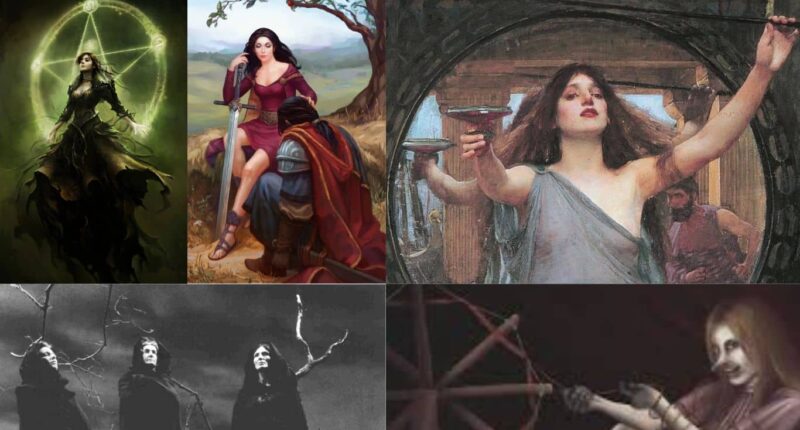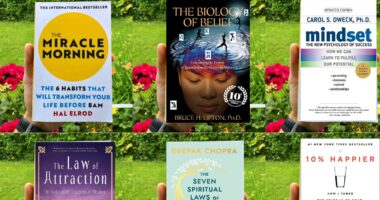Dare to delve into the mystical realm of folklore and mythology where enigmatic figures cast their spells and conjure tales that have captivated the imagination of generations. In a world where the supernatural and the ordinary blend seamlessly, the allure of witches has endured, enchanting us with their mystique and power. From malevolent enchantresses to wise healers, these magical beings have left an indelible mark on the tapestry of human culture. Join us as we journey through time, unearthing the stories of the 10 Most Famous Witches in Folklore and Mythology who have bewitched the world with their sorcery, wisdom, and allure.
10 Most Famous Witches in Folklore and Mythology
Circe (Greek mythology)

Circe is a prominent sorceress in Greek mythology, best known for her appearance in Homer’s Odyssey. She is the daughter of the sun god Helios and the nymph Perse. Living on the mythical island of Aeaea, Circe possesses vast magical knowledge, particularly in the use of potions and enchantments. When Odysseus and his crew land on her island, she uses her powers to transform his men into pigs. Eventually, with the help of the gods, Odysseus outwits Circe and forces her to release his crew. She becomes his lover, aiding him in his journey and providing valuable guidance before he departs.
Morgan le Fay (Arthurian legend)

Morgan le Fay is a prominent figure in Arthurian legend, often portrayed as a powerful enchantress and King Arthur’s half-sister. She possesses a deep knowledge of the mystical arts and has complex relationships with other key characters. Morgan’s motives vary across different tales, sometimes depicted as a cunning antagonist seeking to undermine her brother’s reign or as an ambiguous figure with her own agenda. Despite her often nefarious deeds, Morgan also showcases her healing abilities and wisdom. Ultimately, her character represents the duality of magic and its potential for both good and evil within the Arthurian world.
Baba Yaga (Slavic folklore)

Baba Yaga is a notorious figure in Slavic folklore, often depicted as a fearsome old witch who dwells deep in the forest. Living in a peculiar hut that stands on chicken legs, she is a complex character who embodies both benevolent and malevolent qualities. Known for her ability to shape-shift and fly in a mortar and pestle, Baba Yaga is frequently sought after for her wisdom and magical powers. Though she may offer assistance to those who encounter her, the price for her help is often steep, testing the courage and wit of those who dare to approach her.
The Weird Sisters (Shakespeare’s Macbeth)
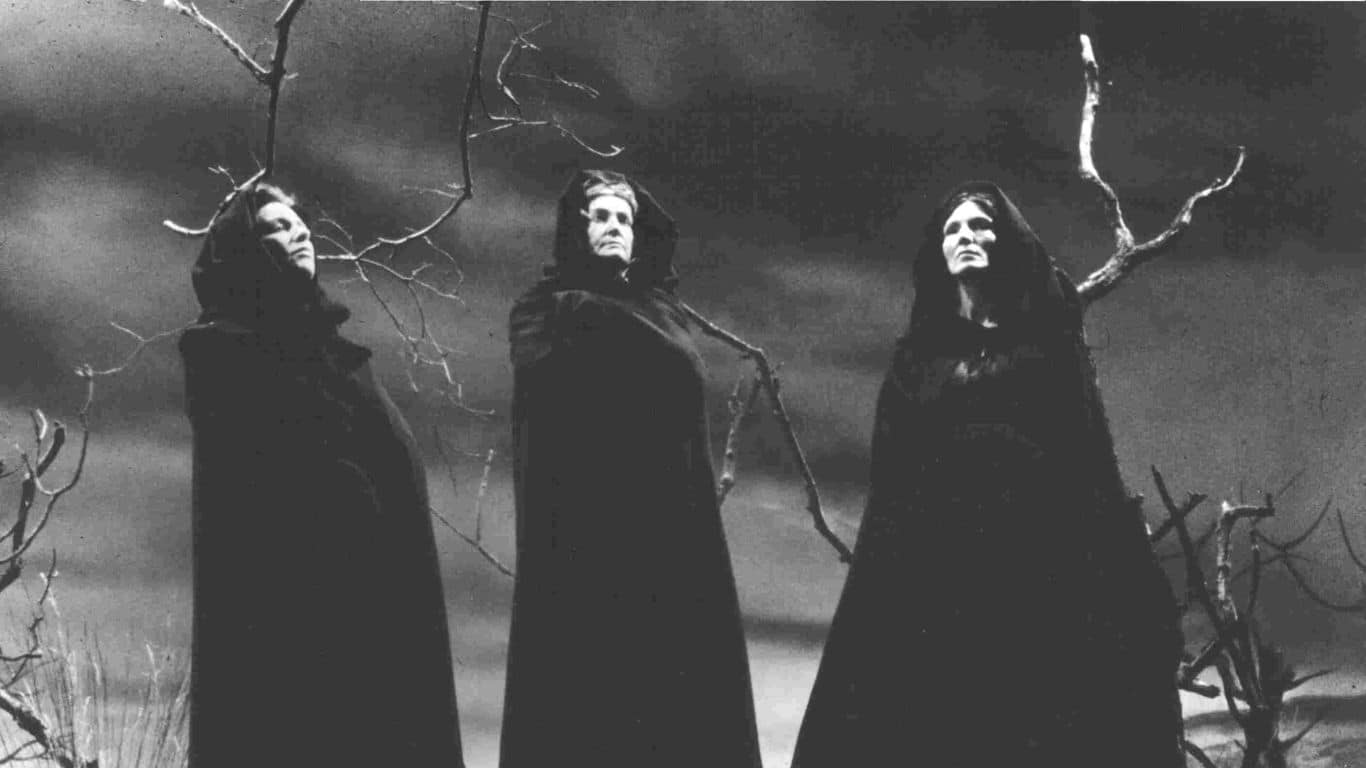
The Weird Sisters are a trio of witches in Shakespeare’s tragedy, Macbeth. These enigmatic figures play a crucial role in the play, as they prophesize Macbeth’s rise to power and eventual downfall. They first appear amidst a storm, uttering the famous lines, “When shall we three meet again? In thunder, lightning, or in rain?” Their prophecies manipulate Macbeth and his wife, Lady Macbeth, leading them down a dark path of ambition, treachery, and ultimately, their destruction. The Weird Sisters symbolize the play’s themes of fate, ambition, and the consequences of tampering with the natural order.
The White Witch (C.S. Lewis’s Chronicles of Narnia)

The White Witch, also known as Jadis, is a central antagonist in C.S. Lewis’s Chronicles of Narnia series, particularly in “The Lion, the Witch, and the Wardrobe.” She is an evil sorceress who rules Narnia with an iron fist, casting a spell that plunges the land into an eternal winter without Christmas. Cold-hearted and manipulative, the White Witch uses her power to maintain control and terrorize the inhabitants of Narnia. Her reign is challenged by the arrival of four siblings—Peter, Susan, Edmund, and Lucy—who, with the help of the great lion Aslan, seek to break her spell and restore Narnia to its former glory.
The Wicked Witch of the West (L. Frank Baum’s The Wonderful Wizard of Oz)
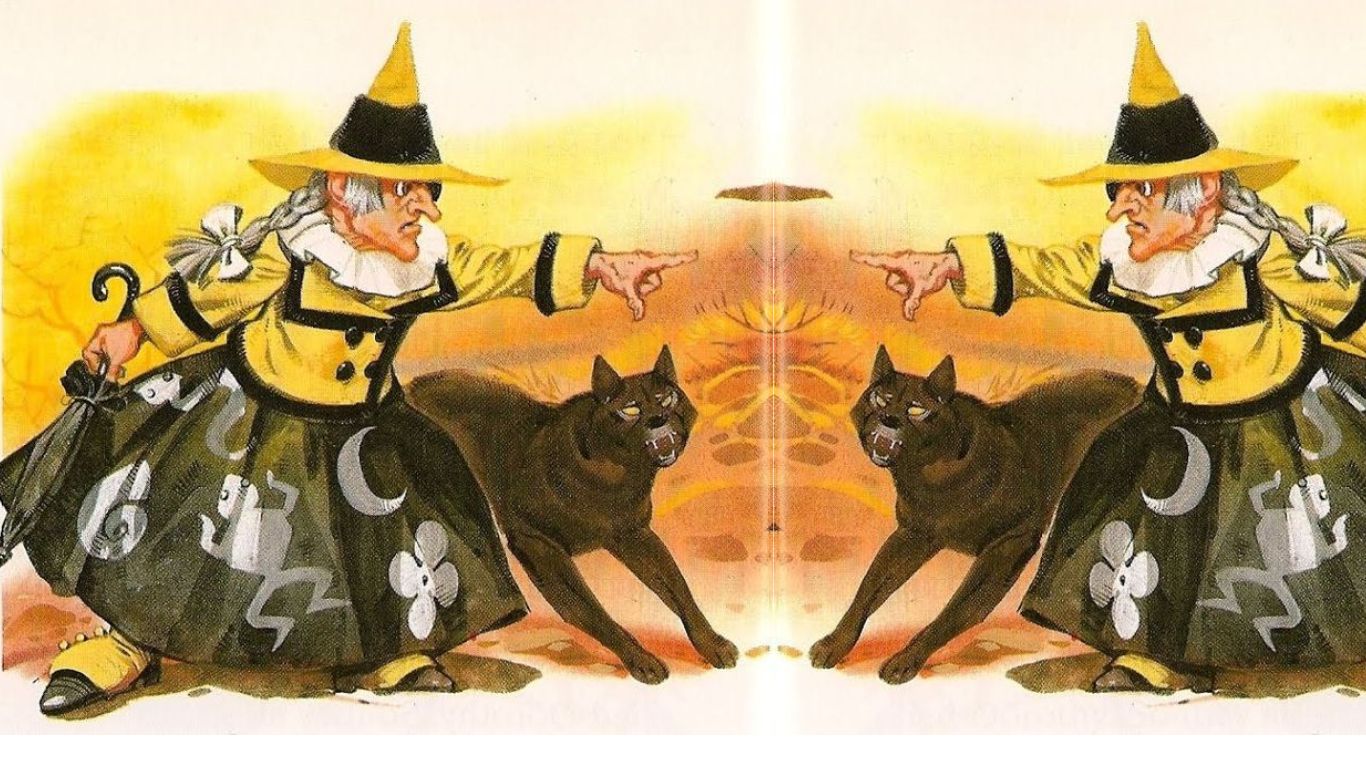
The Wicked Witch of the West is a central antagonist in L. Frank Baum’s classic novel “The Wonderful Wizard of Oz.” As a malevolent force in the land of Oz, she seeks vengeance on Dorothy for the accidental death of her sister, the Wicked Witch of the East. Possessing immense power and the ability to control winged monkeys, the Wicked Witch terrorizes Dorothy and her companions on their journey to meet the Wizard. Ultimately, she meets her demise when Dorothy, in an act of self-defense, douses her with water, causing her to melt away. The character has become a symbol of wickedness and fear in popular culture.
La Befana (Italian folklore)

La Befana is a beloved figure in Italian folklore, often referred to as the Christmas Witch. Her story is deeply rooted in Italian culture, and she is celebrated on Epiphany Eve (January 5th) each year. According to legend, La Befana is an old, kind-hearted woman who travels on a broomstick, delivering gifts and sweets to well-behaved children, while naughty ones receive coal. Her appearance is reminiscent of a stereotypical witch, with a crooked nose, tattered clothes, and a sack of gifts on her back. La Befana’s origins can be traced back to pagan traditions, but she has become a cherished part of Italian Christmas celebrations, representing generosity and the spirit of giving.
Lilith (Jewish folklore)

Lilith, a figure in Jewish folklore, is often depicted as a female demon or witch with origins in ancient Mesopotamian mythology. She is sometimes considered Adam’s first wife, created alongside him. However, Lilith refused to be subservient to Adam and left the Garden of Eden, resulting in the creation of Eve. Over time, Lilith’s legend has evolved, and she has been associated with seduction, childbirth, and the deaths of infants. As a symbol of independence and defiance, Lilith has been embraced by some feminist movements, reflecting her complex role in the realm of mythology and cultural interpretation.
Kikimora (Slavic folklore)
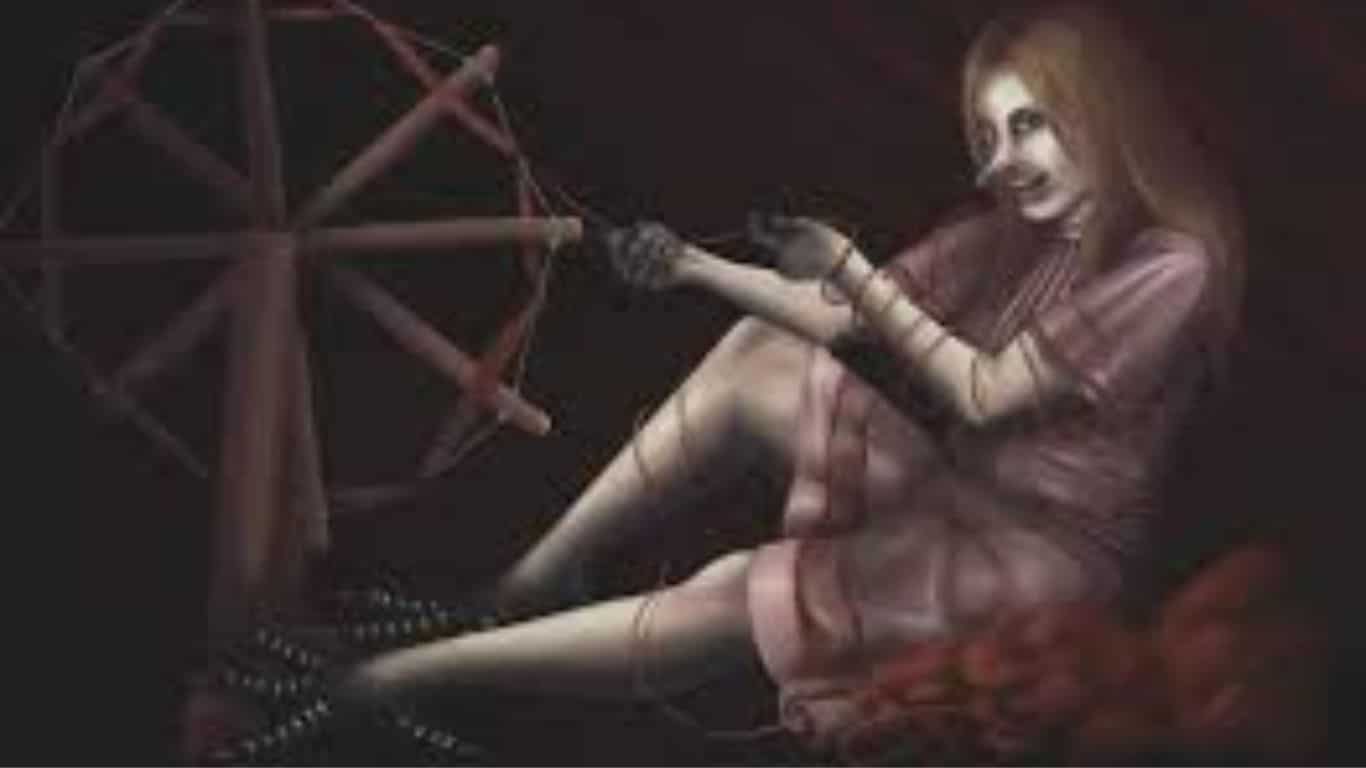
Kikimora, a female house spirit or witch originating in Slavic folklore, is a mysterious and enigmatic figure. Often portrayed as a small, ugly creature with unkempt hair and a long, sharp nose, she is said to inhabit rural households, residing behind the stove or in the cellar. Kikimora is a dual-natured spirit, capable of both aiding and harming the household. When pleased, she helps with chores and looks after the family; when angered, she becomes a malicious entity causing mischief, misfortune, and nightmares. To appease Kikimora, families maintain a clean home and leave offerings, ensuring a harmonious coexistence.
Rangda (Balinese mythology)

Rangda is a prominent figure in Balinese mythology and the personification of evil. She is often depicted as a terrifying, fanged creature with long, unkempt hair and large, pendulous breasts. As a powerful witch queen, Rangda is believed to lead an army of malevolent spirits called “Leyaks” and holds the power to cause chaos, disease, and misfortune. In Balinese Hinduism, Rangda’s eternal struggle against Barong, the king of spirits and the embodiment of good, represents the cosmic battle between good and evil. Ritual dances and ceremonies, like the Barong dance, are performed to maintain balance and protect the people from Rangda’s dark influence.
Also Read: The Powerful Kings and Leaders of Gods in Mythology
